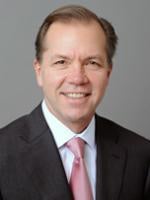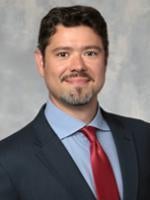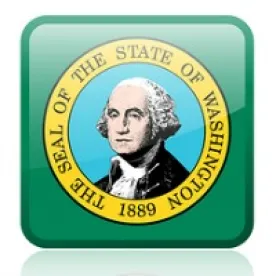The Washington State Department of Ecology (Ecology) recently released “preliminary draft rules” that would grant variances to the Clean Water Act (CWA) Water Quality Standard (WQS) for PCBs[1] at three public and two private wastewater treatment facilities that discharge to the Spokane River. If approved, the variances would require each facility to adopt a additional pollution controls and take other actions to remove PCBs from wastewater while providing up to 20 years to recoup their investments and achieve compliance with the WQS for PCBs. Ecology is accepting public comments through 25 July.[2]
A WQS variance may be a useful tool for public and private entities that discharge wastewater or stormwater. As new, more stringent, WQS are adopted ahead of the technology needed to meet the WQS, a variance provides a legal framework to reduce pollution to the extent feasible without being exposed to expensive lawsuits seeking compliance with an impossible task. When new, reliable technology becomes available, the variance can be lifted or modified as that technology is deployed.
The Spokane River dischargers are the first municipal and industrial dischargers in the state of Washington to test whether Ecology’s new variance implementation tool offers a realistic path forward in making progress toward improved water quality while allowing a reasonable time for the public and private sector to comply with more stringent requirements. Ecology’s rulemaking process here will inform the utility and viability of the variance tool throughout the state.
PCBs in the Spokane River and the PCB WQS
The U.S. Environmental Protection Agency (EPA) effectively cancelled all commercial uses of PCBs in the 1970s but they remain ubiquitous in the environment. PCBs are highly toxic, persistent, and carcinogenic, and the “safe” level of PCBs is so low that it cannot reliably be measured. The Spokane River has been listed as “impaired” under Section 303(d) of the CWA because PCBs have bio-accumulated in fish in the river.
Public and private wastewater facilities are doing the hard, expensive work of actually preventing PCBs from entering the Spokane River. For example, the City of Spokane tested several different technologies to reduce phosphorous and selected a microfiltration system that would also maximize PCB removal. Spokane County built a new, state of the art, treatment plant using ultrafiltration technology. The county’s facility has been operating for several years and the city’s “next level of treatment” should be installed in 2021. In addition, the city has multiple programs in place to prevent PCBs from entering storm sewers and to control combined sewer overflows (CSOs) that can be a significant source of PCBs because CSOs never reach the treatment plant. Together, ratepayers are investing over half a billion dollars to improve conditions in the Spokane River.
To finance this work, the community issues bonds that are repaid with utility charges. The bonds are long-term and mature over 20 years. A 20-year WQS variance presented a vehicle that allows the community to invest in cleaner water with the confidence that new systems would not be rendered obsolete before they were even paid for.
Local governments and industry have been reluctant to accept effluent limits on PCBs in wastewater discharges that cannot be achieved with current technology or even detected reliably in a lab. This initially lead local governments, industry, tribes, state regulators and environmental groups to try to work together to find cost-effective solutions through the Spokane River Toxics Task Force. Differences of opinion about what needed to be done eventually surfaced.
The Spokane Tribe and one environmental nongovernmental organization (eNGO) sued EPA to force the agency to establish a “total maximum daily loading” (TMDL) of PCBs in the Spokane River and impose more stringent limits on PCBs in effluent discharged to the river, even if the limits could not be met with any known technology or reliably measured. This litigation is still pending and dispositive motions will be fully briefed in early September 2020.[3]
At the same time, Ecology and EPA have struggled with what WQS for PCBs is sufficiently protective of human health and the environment. Ecology adopted a standard of 170 parts per trillion (ppt) in 2015 after a multi-year stakeholder process and at least two trips through the Washington State Legislature. Along with its adoptions of revised WQS for PCBs and numerous other pollutants, Ecology adopted new implementation tools to help dischargers come into compliance with the revised WQS. Ecology’s implementation tools included WQS variances. EPA, with the support to Tribes and eNGOs, rejected Ecology’s WQS as insufficiently stringent. Notably, however, EPA approved Ecology’s new implementation tools, including its WQS variance provisions. EPA then promulgated a federal PCB standard of 7 ppt for the State of Washington in 2016, over Ecology’s objections. Industry petitioned the Trump administration in 2017 to reverse course and approve Ecology’s standard.
EPA did just that in a rule published in May 2020; effective 12 June 2020, the PCB human health WQS for PCBs in Washington State is 170 ppt.[4] However, the on-going warfare among the Trump administration, the state of Washington, tribes and eNGOs on a variety of fronts appears to have spilled over into the regulation of PCBs under the CWA. Ecology sued EPA to prevent EPA from reinstating Ecology’s own standard. Interestingly, Ecology’s Complaint does not argue that its standard of 170 ppt, which remains on the books, is wrong or that EPA’s standard of 7 ppt is better. Rather, Ecology merely argues EPA did not properly follow the Administrative Procedure Act. The litigation is pending and dispositive motions should be fully briefed soon.[5]
What is a WQS Variance?
A WQS variance is a time-limited designated use and parameter-specific change to the water quality standards for a waterbody. The variance maintains the ultimate goal of reaching water quality standards or the highest attainable condition in the waterbody, but does so in a step-by-step process over a longer period of time.
In 2016, Ecology adopted, and EPA approved, general regulations for considering and granting issuance of variances.[6] Ecology’s regulations identify three types of variances that may be issued: an individual discharger variance, a multidischarger variance, or a waterbody variance.
An individual discharger variance allows an individual National Pollutant Discharge Elimination System (NPDES) permit holder to seek a temporary modification to a designated use of a waterbody and associated water quality criteria at the points of compliance identified in the individual variance. The variance serves as the basis for the interim water quality-based controls or water quality-based effluent limit in a discharger’s NPDES permit.
In contrast, a multidischarger variance is a statewide variance that applies to any permitted individual discharger that meets the requirements for the variance.
Finally, a waterbody variance is a variance that applies to the WQS for a specific stretch of waters. Under this type of variance, the revised standards apply to any discharge within the defined geographic scope of the variance, provided that the individual discharger meets the requirements of the variance. Notably, a waterbody variance involves additional requirements, such as implementation of best management practices that are not required for individual or multidischarger variances.
Ecology’s process to grant a variance is formal rulemaking, subject to public notice and comment. Additionally, because it is considered a WQS, Ecology is required to submit the variance to EPA for review and approval under CWA section 303(c), 33 U.S.C. § 1313(c). Under EPA’s regulations, a variance can be granted when one of the six factors is met, including whether “[h]uman caused conditions or sources of pollution prevent the attainment of the use and cannot be remedied or would cause more environmental damage to correct than to leave in place” and “[c]ontrols more stringent than those required by sections 301(b) and 306 of the Act would result in substantial and widespread economic and social impact.”[7]
Spokane River Variance Requests and the Process Ahead
In April 2019, Ecology received its first formal requests for a variance under its new variance regulations. Five entities with NPDES permits to discharge to the Spokane River applied to Ecology for individual discharger WQS variance for PCBs: Liberty Lake Sewer and Water District, Kaiser Aluminum, Inland Empire Paper Company, Spokane County, and the City of Spokane. The dischargers applied for variances because of concerns that they will be unable to meet future permit limits for PCBs based on the PCB WQS of 7 ppt. The Spokane River dischargers’ applications contain the detailed information required under Ecology’s regulations at Washington Administrative Code (WAC) 173-201A-420(3).
In response, on 12 June 2019, Ecology determined that the applications meet the variance submittal requirements, and the agency initiated its rulemaking process to amend its WQS regulations at WAC 173-201A, including its variance regulations at WAC 173-201A-420.[8] The process is moving slowly. On 10 June 2020, Ecology published an informal “preliminary” draft of the PCB variance rulemaking for public comment.[9] Ecology is accepting public comment through 25 July; although the agency has indicated that, while it will consider public comment, it will not formally respond to public comment on the preliminary draft rule.[10] Ecology is only moving ahead with a preliminary draft due to the uncertainties surrounding its litigation against EPA over the withdrawal of EPA’s federal WQS rule for Washington. As a result, Ecology likely will not complete its rulemaking process until the conclusion of its litigation with EPA.[11]
Ecology’s preliminary draft rule and its underlying technical support document describe the following core components of the proposed Spokane River individual discharger variances.
-
Basis for the variance from the existing PCB WQS. As noted, the individual discharger variances must demonstrate the need for a variance using one of the six factors listed in EPA’s regulations at 40 C.F.R. § 131.10(g). Ecology proposed using factor 3 and, therefore, the Spokane River dischargers must show that human-caused sources of PCB pollution prevent the attainment of the fish harvest and water supply uses applicable to the Spokane River and cannot be remedied. In its preliminary draft rule and supporting documents, Ecology determined that “treatment technology that would reduce PCBs in the Spokane River to levels that achieve the human health criterion necessary to protect for the fish harvest and water supply uses in the river is not presently available.”[12] In reaching its conclusion, Ecology evaluated existing treatment technologies as wells as information from the Spokane River dischargers variance applications regarding alternative actions—such as land-based treatment, beneficial water re-use, and discharging to a different water body—to meet the PCB WQS.[13]
-
Variance duration, interim review, and public comment. For four of the individual discharger variances (City of Spokane, Spokane County, Inland Empire Paper, and Liberty Lake), Ecology proposed a 20-year variance term. Ecology proposed 10 year variance term for Kaiser Aluminum.[14] Per EPA requirements, because the proposed variances are for terms greater than five years, Ecology must conduct a periodic variance reevaluation at least every five years after EPA approval of the variance.[15] Ecology’s interim review includes, among other things, a summary of PCB sampling data and PCB reduction activities, recalculation of the individual discharger’s highest attainable condition (HAC) (see discussion in the bullet below), and any adjustments needed to the individual discharger’s NPDES permit limits if the HAC is updated. The public and stakeholders will have an opportunity to comment on Ecology’s mandatory interim review.[16]
-
Determining the HAC. The central component of the individual discharger variances is the HAC (i.e., the time-limited designated use of the waterbody at the point of discharge and a time-limited water quality criterion for PCBs that reflects the HAC during the term of the WQS variance). Ecology’s rule proposed a time-limited designated use of limited fish harvest and limitedwater supply at the point of discharge. Ecology proposed a time-limited PCB criterion based on the interim effluent condition reflecting the greatest pollutant reduction achievable using pollutant control technologies installed at the time Ecology would adopt the WQS variance. For the Spokane River dischargers, the HAC is quantified by the minimum percent of PCB removal efficiency, which ranges from 85 percent to over 97 percent PCB removal depending on the discharger and the pollution control technology each discharger has in place or has plans to install in the coming years.[17]
-
Individual discharger pollution minimization plan (PMP). As part of the HAC, each Spokane River discharger must develop and implement a PMP outlining the actions it will take to reduce PCB’s in its effluent and to demonstrate reasonable progress toward the underlying PCB WQS during the term of the variance, including (1) continued PCB source investigation and identification; (2) mitigation or reduction of PCB sources; (3) regional coordination actions to reduce PCBs in the Spokane River, including mandatory participation in the Spokane River Toxics Task Force; and (4) annual reporting and a discussion of adaptive management strategies. For the municipal discharges, PCB source identification and reduction must include updating CWA pretreatment programs for industrial dischargers to wastewater treatment facilities and a continued evaluation of opportunities for alternative treatment, such as land-based treatment and beneficial water reuse.[18]
-
State PMP. In addition to the individual discharger PMP, Ecology proposed a state PMP, or a set of pollutant minimization actions Ecology will implement to minimize PCBs in the Spokane River. Among the actions Ecology proposed to take are: (1) to cleanup PCB-contaminated sites under the Model Toxics Control Act (i.e., the state’s equivalent of the federal Superfund law), and (2) to identify and document nonpoint source pollution such as agricultural runoff, and use state regulatory tools to encourage or mandate compliance.[19]
Ultimately, Ecology will respond to the Spokane River dischargers’ variance applications in the form of a final rule submitted to EPA for approval or a denial of the applications. If Ecology approves the variance applications, Ecology will use the variances to issue updated NPDES permits by 2021 to the five Spokane River dischargers that meet federal and state regulations and address PCB reductions in the Spokane River. If Ecology denies one or more of the individual discharger variance applications, the agency will likely issue NPDES permits that include effluent limits based on the current PCB criterion and without the long-term protections and concrete plans for reducing PCBs in effluent that come with the variance-based solution.
Broader Implications for Washington Dischargers
A WQS variance may be a useful tool for public and private entities that discharge wastewater or stormwater. As new, more stringent, WQS are adopted ahead of the technology needed to meet the WQS, industry, cities, counties and port authorities will be searching for cost-effective ways of coming into compliance. A WQS variance provides a legal framework to reduce pollution to the extent feasible without being exposed to expensive lawsuits seeking compliance with an impossible task. When new, reliable technology becomes available, the variance can be lifted or modified as that technology is deployed.
NOTES
[1] “PCBs” are polychlorinated biphenyls.
[2] https://ecology.wa.gov/Regulations-Permits/Laws-rules-rulemaking/Rulemaking/WAC173-201A-variances
[3] Sierra Club v U.S. Envt’l Protection Agency, No. 2:11-CV-1759-BJR (W.D. Wash).
[4] EPA, Withdrawal of Certain Federal Water Quality Criteria Applicable to Washington, 85 Fed. Reg. 28494 (May 13, 2020).
[5] State of Washington v. U.S. Envt’l Protection Agency, No. 2:19-CV-00884-RAJ (W.D. Wash). Note also, Puget Soundkeeper Alliance v. U.S. Envt’l Protection Agency, No. 2:20-CV-00907 (W.D. Wash) (Filed June 11, 2020).
[6] WAC 173-201A-420.
[7] 40 C.F.R. §§ 131.14(b)(2)(i)(A)(1), 131.10(g)(3), (6).
[8] Ecology notice of possible variance rulemaking (June 12, 2019), https://ecology.wa.gov/DOE/files/35/35e31cb8-7c0a-4ad3-b63c-69b3b7f62a70.pdf.
[9] Ecology preliminary draft variance rule (June 10, 2020), https://ecology.wa.gov/DOE/files/6e/6e10c1d8-c5a5-412e-870d-8db87d2d63eb.pdf.
[10] Ecology preliminary draft variance rule (June 10, 2020).
[11] Press Release, Ecology, EPA water standards create uncertainty for rule to reduce PCBs discharged into Spokane River (June 10, 2020), https://ecology.wa.gov/About-us/Get-to-know-us/News/2020/June-10-Spokane-River-preliminary-draft.
[12] Ecology, Technical Support Document for PCB Variances on the Spokane River, p. 21-22, https://ecology.wa.gov/DOE/files/89/892829e8-0a74-4085-ad25-10619b014ee4.pdf.
[13] Id. p. 34-46.
[14] Id. at 22-24.
[15] Id. at 24-25; 40 C.F.R. § 131.14(b)(v).
[16] Ecology, Technical Support Document for PCB Variances on the Spokane River, p. 24-25.
[17] Id. at 46-53.
[18] Id. at 57-68.
[19] Id. at 54-57.





 />i
/>i

